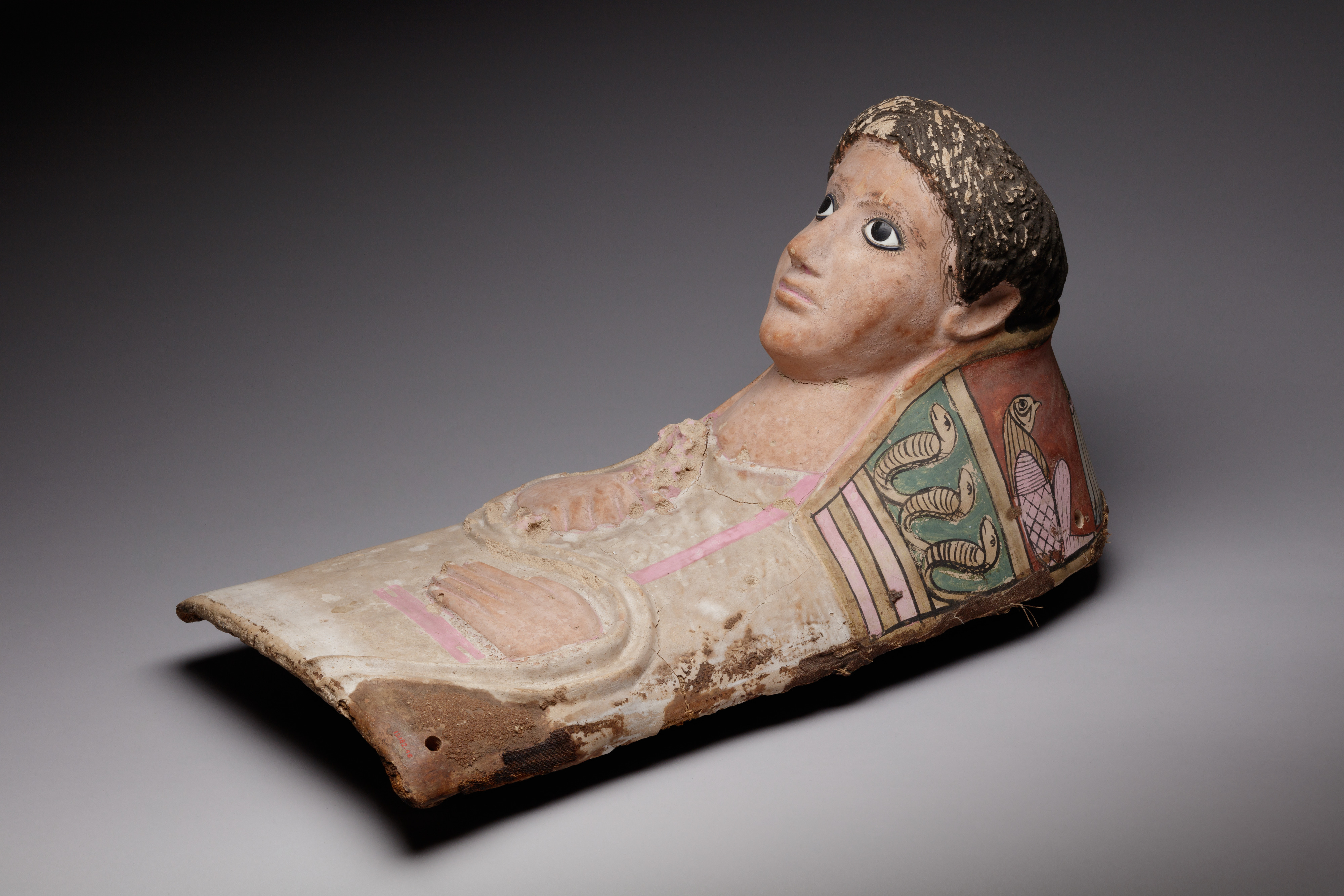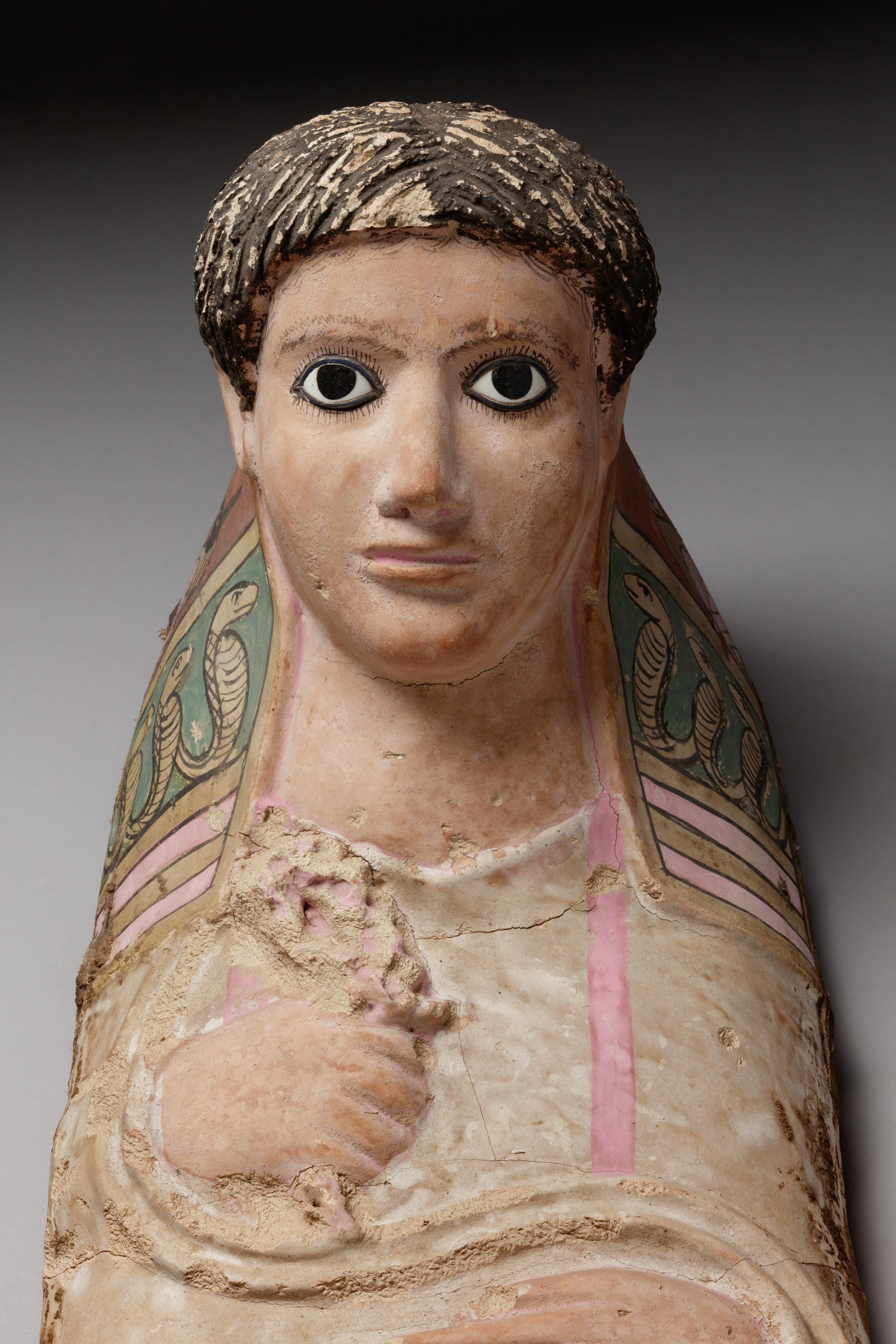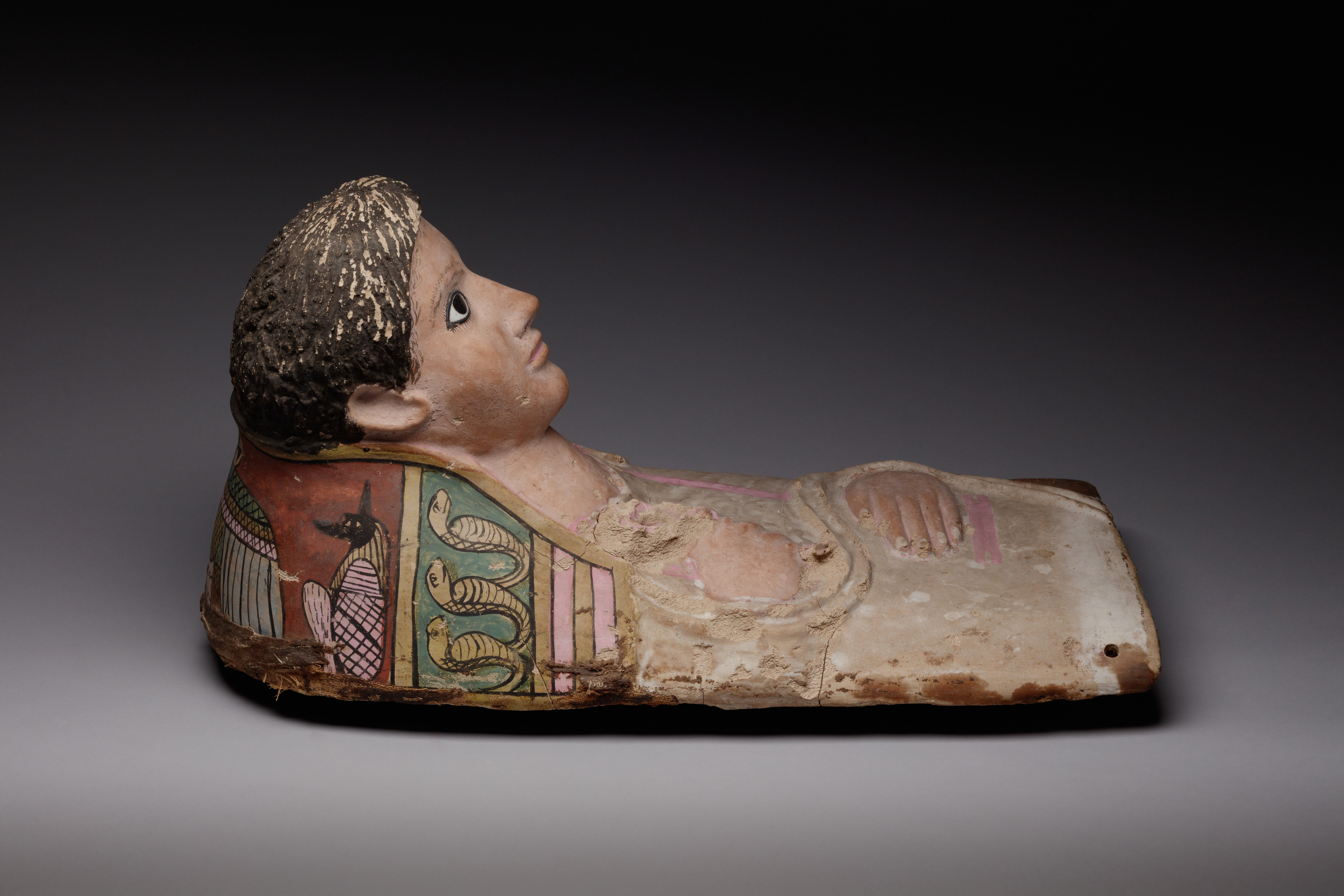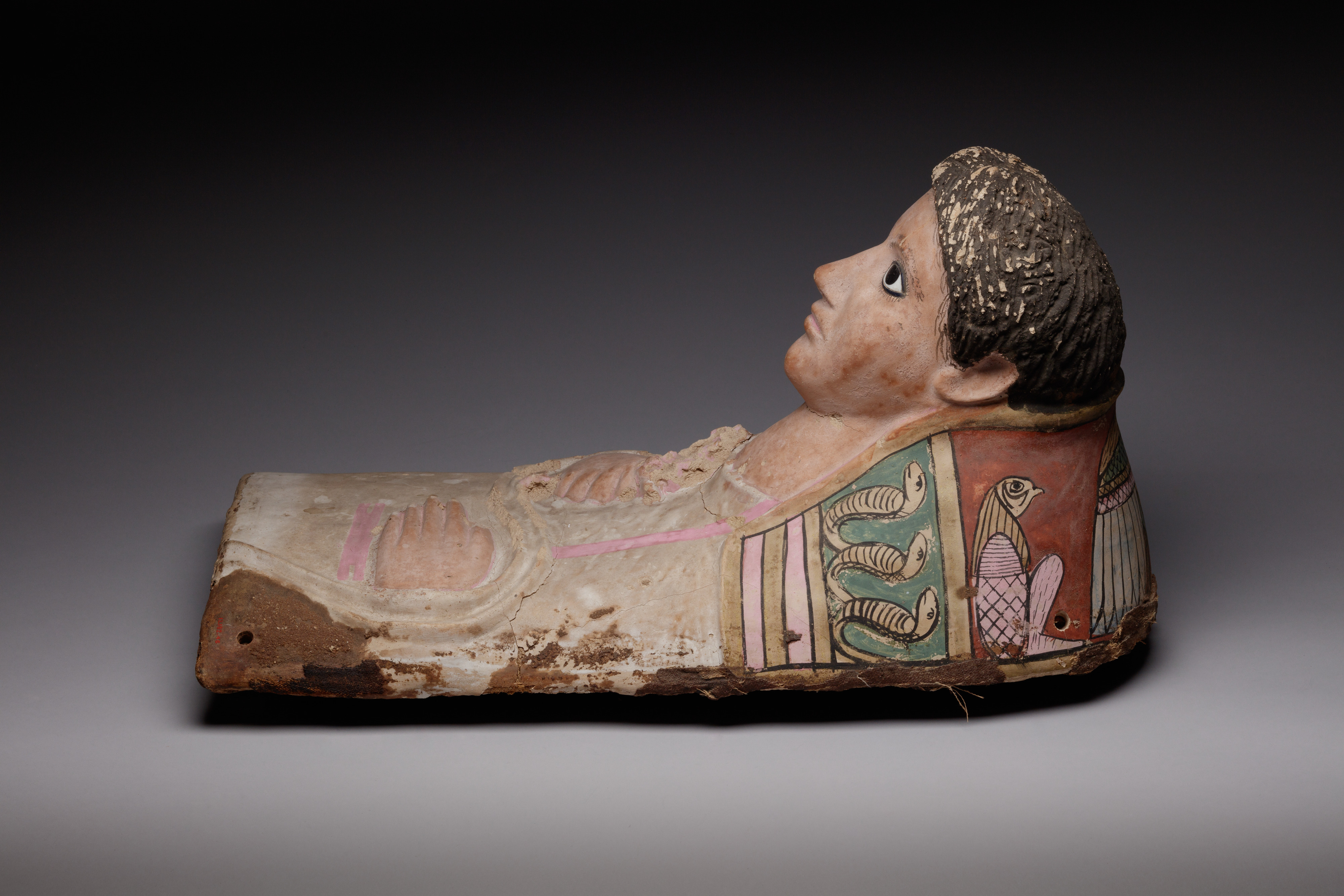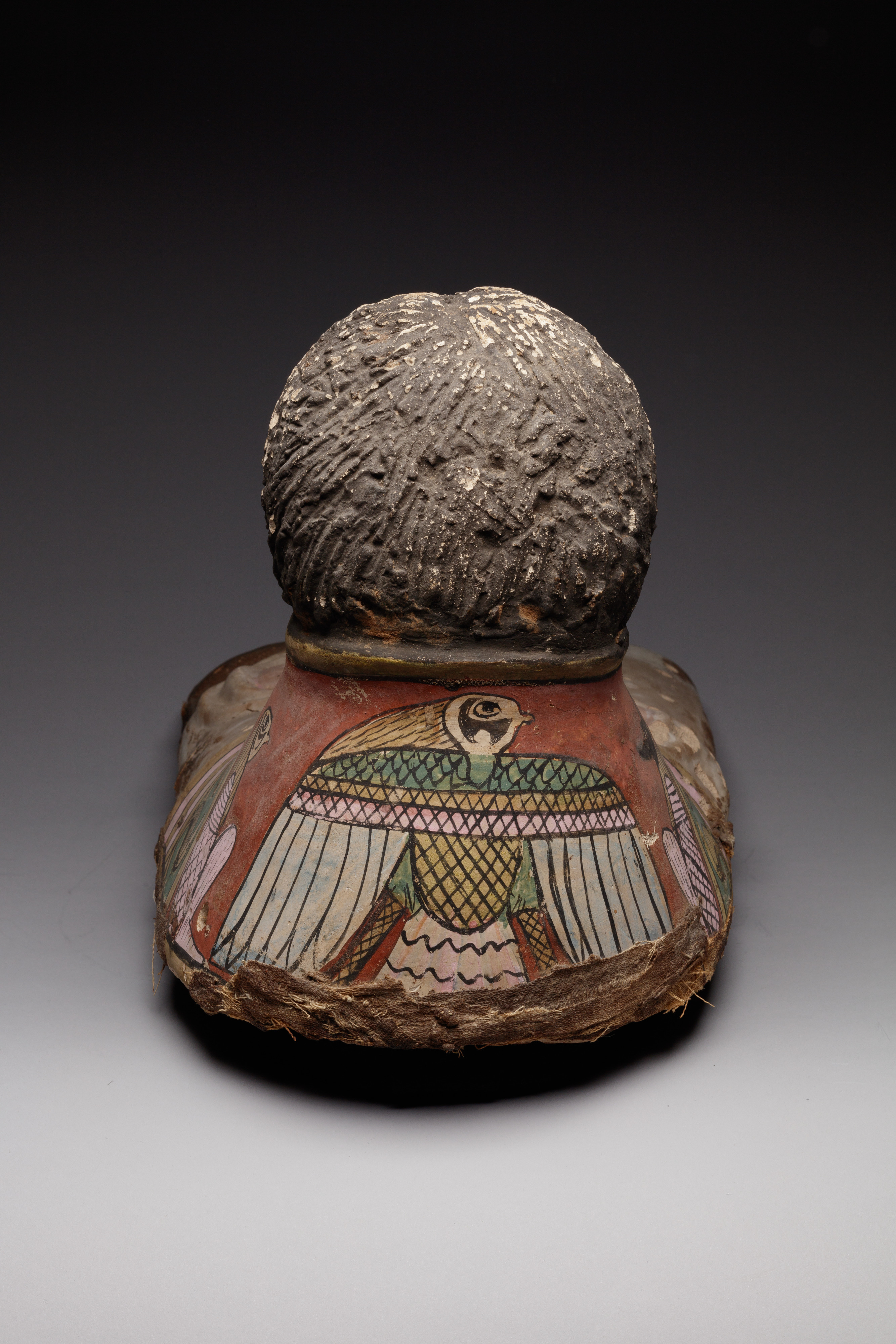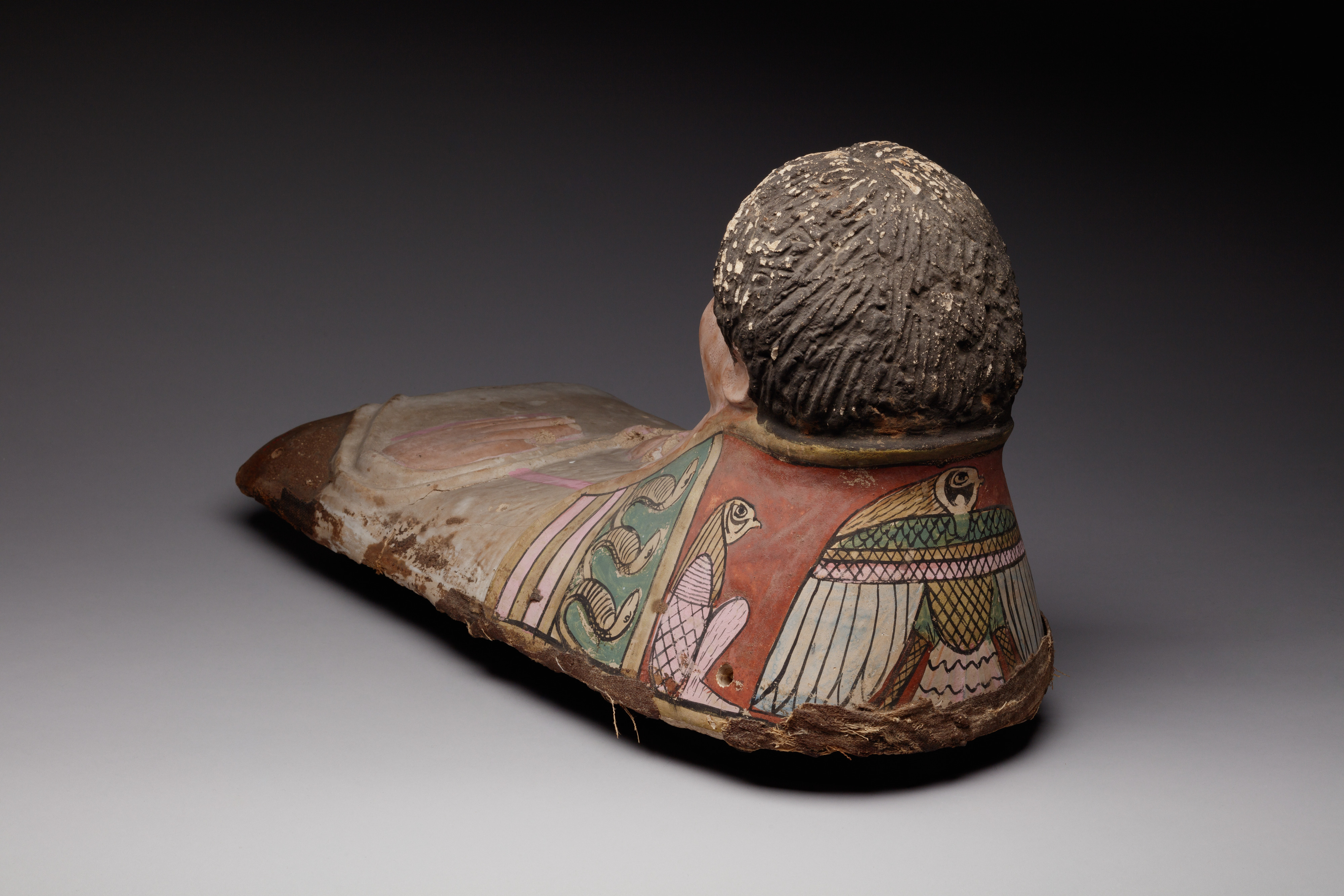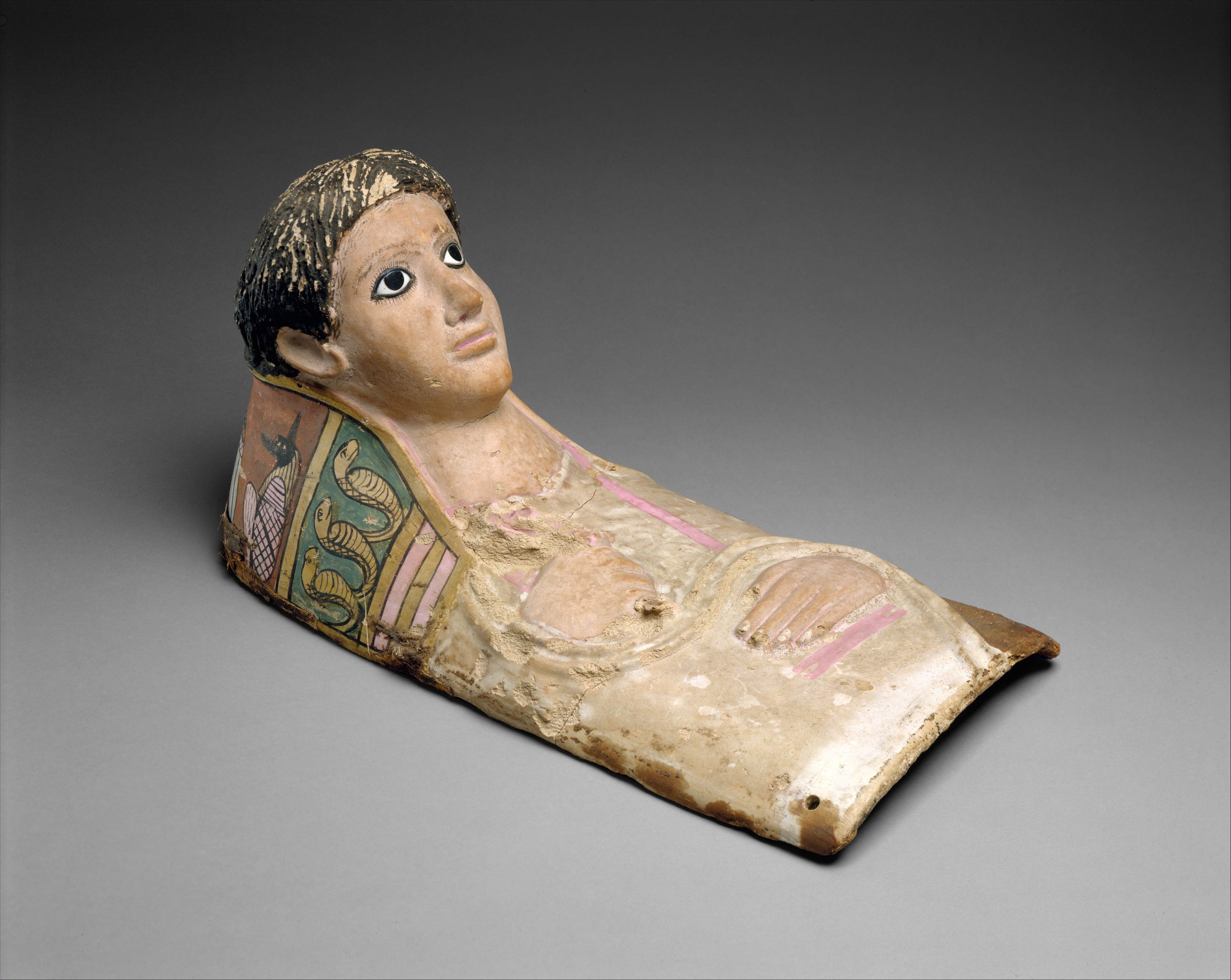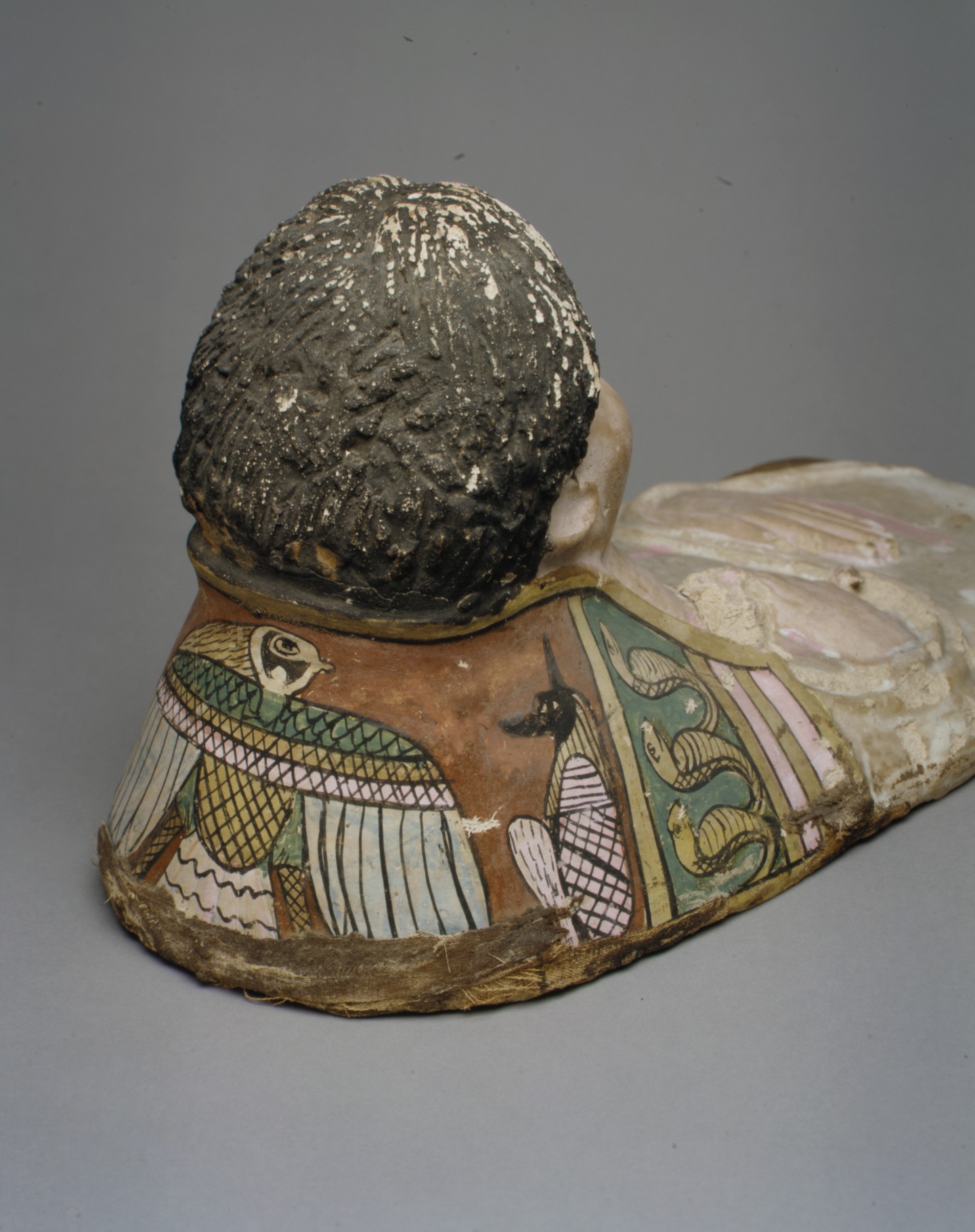Plaster Portrait Mask of a Youth
Roman Period
Portrait masks made in Egypt when it was part of the Roman Empire meld aspects of Greco-Roman and Egyptian artistic traditions and funerary practices. Color and material often play a significant role in articulating the features of the deceased person. Here, polished glass eyes contrast with the matte painted plaster of the face. The tunic and mantle are painted white, with bright pink indicating the Roman clavi (vertical bands on shoulders) and a woven Greek H symbol below the left hand. Egyptian gods and sacred serpents decorate the high support in a wide range of pigments
Due to rights restrictions, this image cannot be enlarged, viewed at full screen, or downloaded.
This artwork is meant to be viewed from right to left. Scroll left to view more.


